C-mount lenses are the tiny optical jewels worn on the fronts of classic 16mm movie cameras. Their minuscule 17.526mm separation between the camera’s mounting flange and film plane makes them largely unsuitable to adapt to (D)SLRs. But many mirrorless cameras have nearly identical specs. Searching 35MMC and the wider web, you’ll discover that Micro Four Thirds, Nikon 1 and Pentax Q cameras can rather easily attain infinity focus through adapted C-mount lenses.
This wouldn’t work as well, though, with my Fuji X-Pro1. Yes, its “flange” distance– 17.7mm– is nearly the same as that for C-mounts. And to preserve their infinity focus on the X-Pro1, I could simply buy (or improvise) a C-to-X adapter disc that insets the lens just under 0.2mm into the camera body.
But when mounted that way, the lens would project circular images about 10mm in diameter onto the sensor (since the normal 16mm movie frame is only 10.26×7.49mm in size). This would cover only part of the 23.6×15.6mm sensor. Yes, I could crop the images down to smaller rectangles, but I wanted to take advantage of all the X-Pro’s 16 megapixels.
And it turned out I could… with lovely results and one quite intriguing application. But to do so simply (without adding extra optical elements), I’d be limited to shooting macros.
Big Close-Ups from Tiny Lenses
The simplest way to cover the X-Pro1’s sensor was to mount the lens further from the camera body than its specified flange distance. The light cone exiting the rear of the lens would then travel farther (and expand more) before reaching the sensor. Of course, infinity focus would be lost, but macro focus would be gained.
So I finally gave it a go by screwing yard-sale C-mount glass into a C-to-T-mount adapter disc, screwing them into a T-to-X adapter tube, and then mounting the combo on the camera (as shown in the opening photo). It looks comical, but works! And the two lenses I tested were the:
- Kern-Paillard Switar AR 25mm f/1.4, designed for high-spec Swiss Bolex cameras (this lens is mounted on the X-Pro1 in the opening photo) and
- Bausch & Lomb 25mm f/2.7 Animar Balcote, often found on mid-century consumer cine cams like the Keystone and Revere (this lens is standing in the lower-right corner of the opening photo)
Flowers in the Wind
In the first of four experiments, I took the X-Pro1+Switar combo out to hand-hold some interior landscapes of rhododendron flowers that had just burst into bloom on a sunny, windy day.
Crazy? Yes. But not totally nuts. The X-Pro1 excels at producing low-light/high-ISO images with minimal digital noise. This allowed me to compensate for hand-holding in the wind by shooting at 1/500 sec, f/4 and ISO 1,600. And as much as possible, I used focus peaking to try for the sharpest results.
Out-of-camera, the photos were dark. But I didn’t need to lighten them. Just re-spreading their RGB histograms across the full range of possible tones with an image editor’s Levels command took care of that. (This was also my only post-processing step for this article’s photos. None were enhanced or cropped.)
My first (and very lucky) shot caught a blossom’s sun-kissed pistil in decent focus. I was happy to see that the image covered the whole sensor without vignetting. And note the great colors and silky out-of-focus backgrounds. This is one sweet lens!:
 In the petals below, the sharpest focus is around the brown spot near bottom-center:
In the petals below, the sharpest focus is around the brown spot near bottom-center:
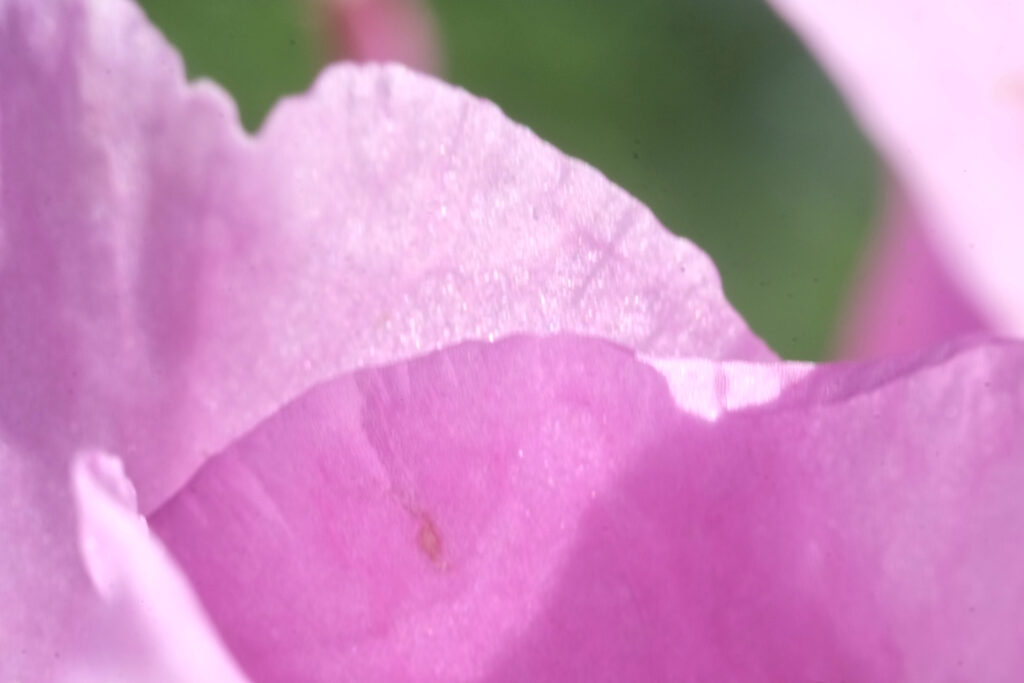 Here, the sharpest focus is just to the lower-left of center (C-mount macro depth-of-field is quite shallow):
Here, the sharpest focus is just to the lower-left of center (C-mount macro depth-of-field is quite shallow):
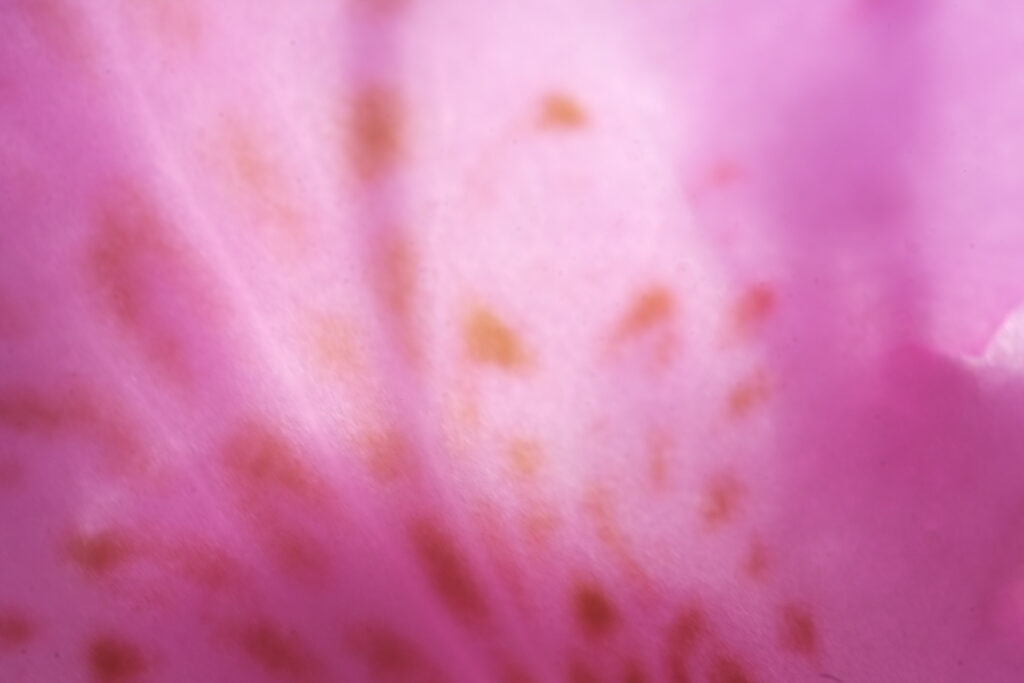 And another lucky grab… of a fairly sharp stamen:
And another lucky grab… of a fairly sharp stamen:
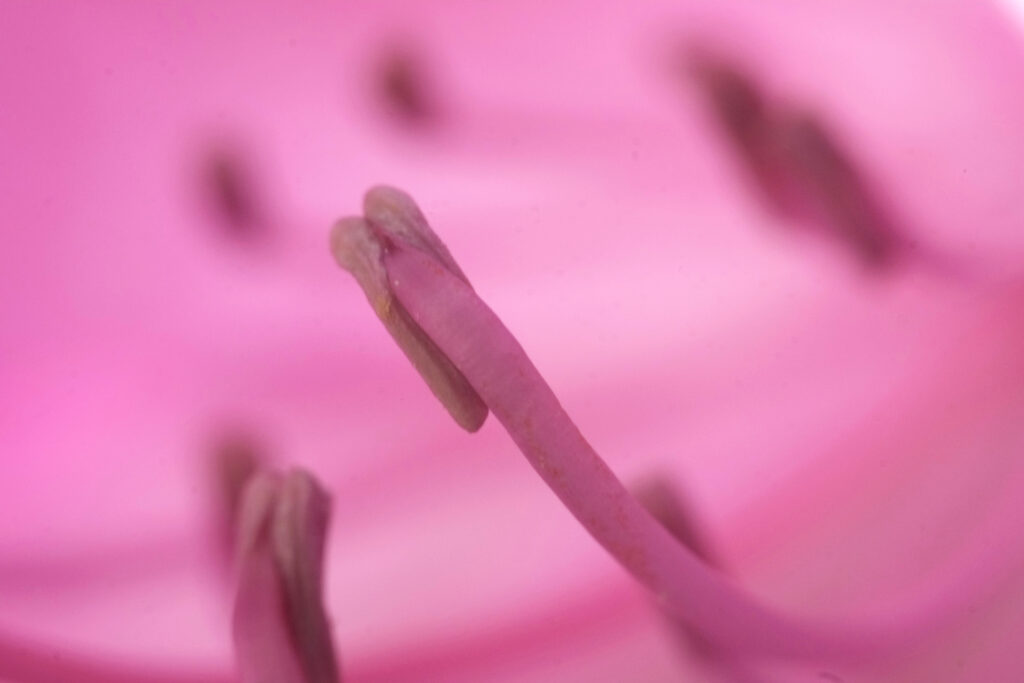 Down to the Sea in the Ocean Diamond
Down to the Sea in the Ocean Diamond
So what’s with this article’s weird opening tableau? The little plastic ship model is actually a USB memory stick disguised as the arctic expedition ship we took on this adventure. And the stones to its right are pieces of Icelandic lava.
For this second experiment, I switched to the Bausch & Lomb lens and under fluorescent desk-lamp illumination, pretended the camera was a drone capturing ship details. Under this dimmer lighting, I shot hand-held at 1/500 sec, f/4 and ISO 6,400.
This first shot (of the “Screech” rum nip in the opening photo) has nothing to do with that Icelandic adventure. I just liked it in the scene:
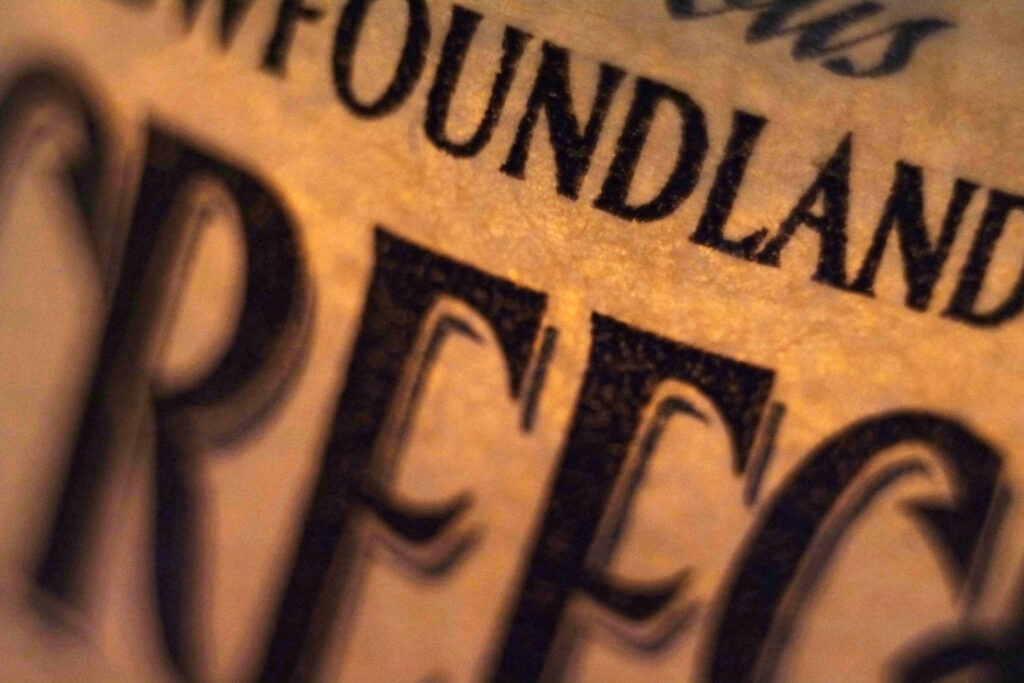 Moving on to the Ocean Diamond model, the letters “OCEAN D” across its hull just filled the sensor’s 23.6mm width. But on the model itself, they spanned 12mm. So the lens produced a nearly 2x magnification. (The Switar lens… also a 25mm optic… did the same.):
Moving on to the Ocean Diamond model, the letters “OCEAN D” across its hull just filled the sensor’s 23.6mm width. But on the model itself, they spanned 12mm. So the lens produced a nearly 2x magnification. (The Switar lens… also a 25mm optic… did the same.):
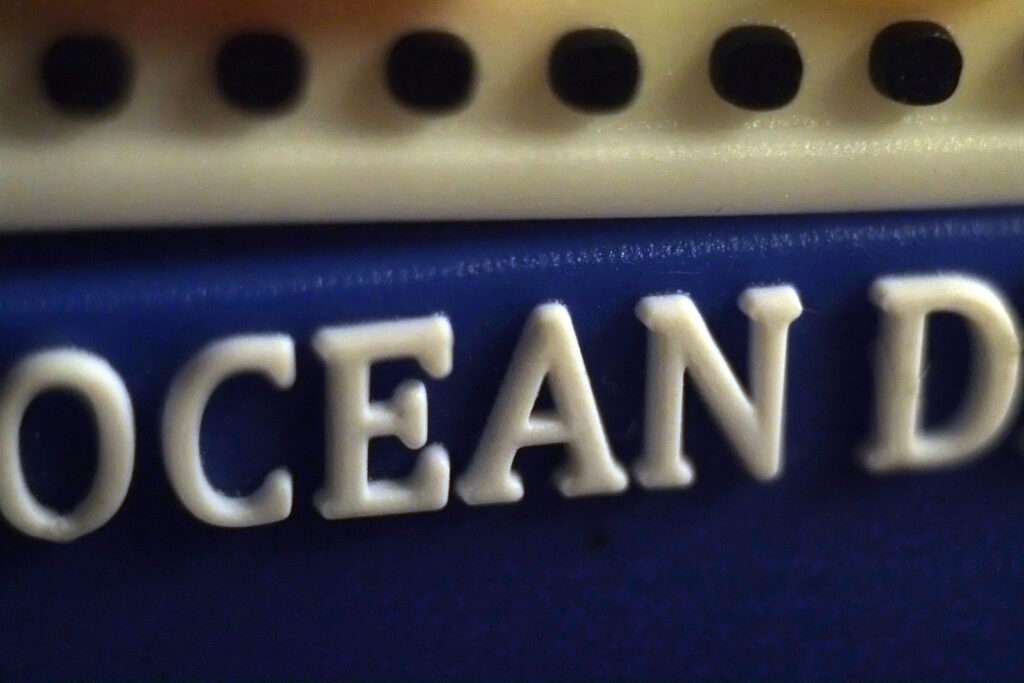 The next two photos offer dramatic fly-bys of the ship’s three radar domes (note the impressive workmanship of the model’s moulding… NOT):
The next two photos offer dramatic fly-bys of the ship’s three radar domes (note the impressive workmanship of the model’s moulding… NOT):
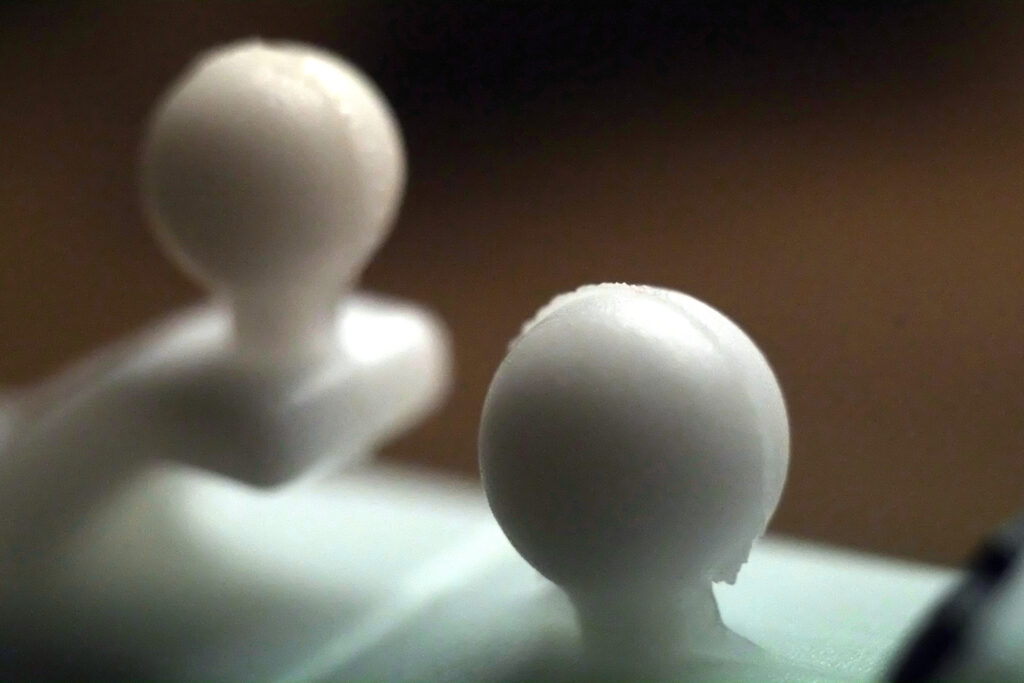
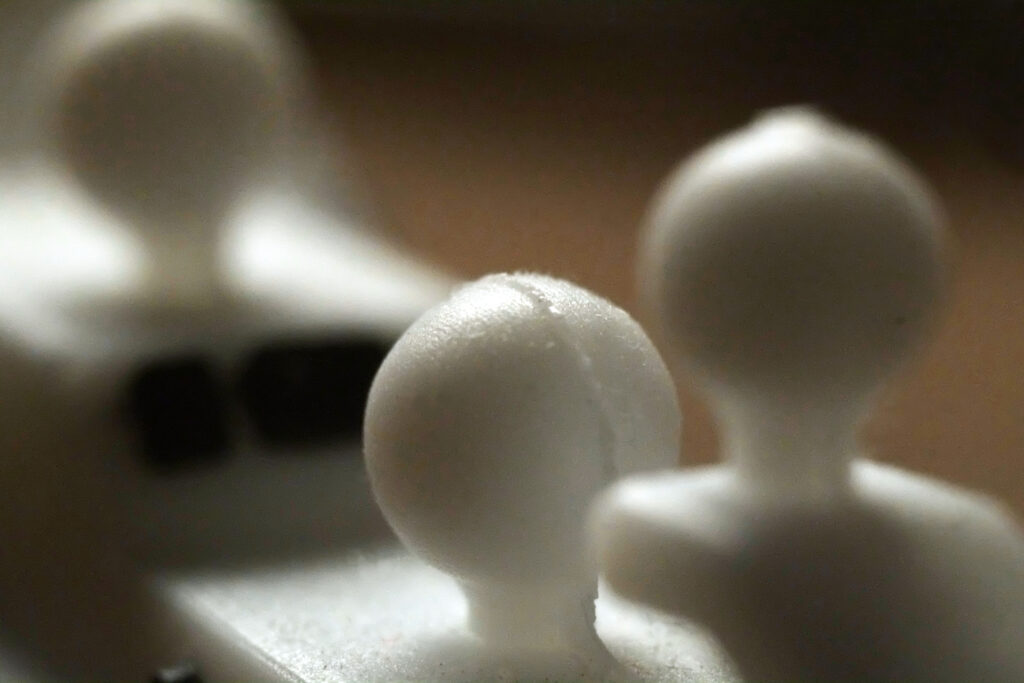 Of course, every ship needs lifeboats:
Of course, every ship needs lifeboats:
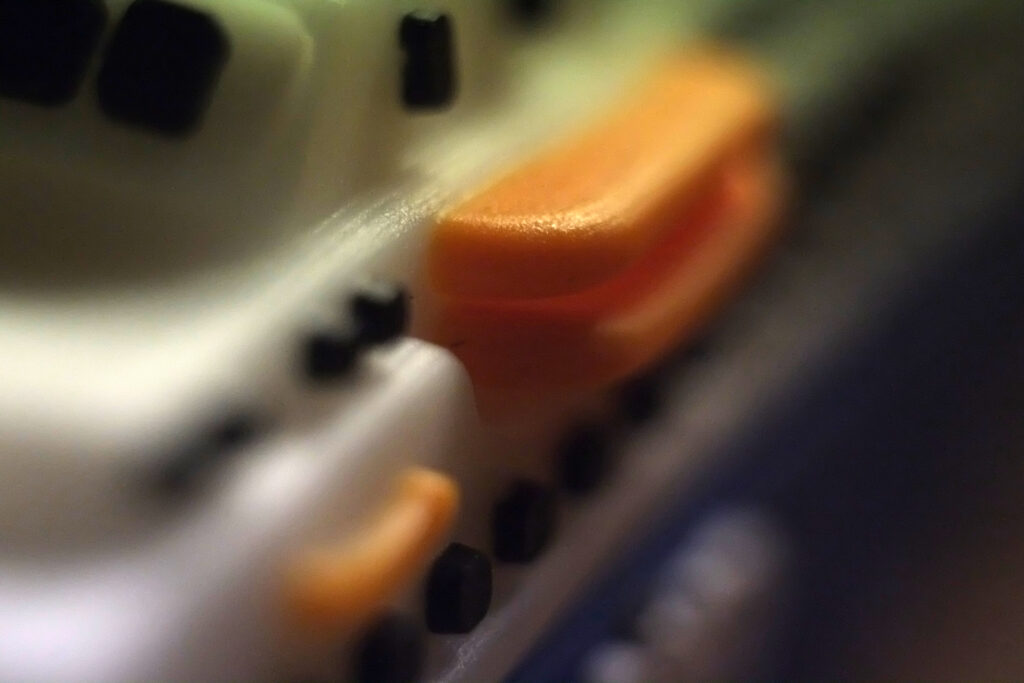 Plus a prominent stack logo (with slight ISO-6,400 chroma noise creeping into the white areas in this dim shot):
Plus a prominent stack logo (with slight ISO-6,400 chroma noise creeping into the white areas in this dim shot):
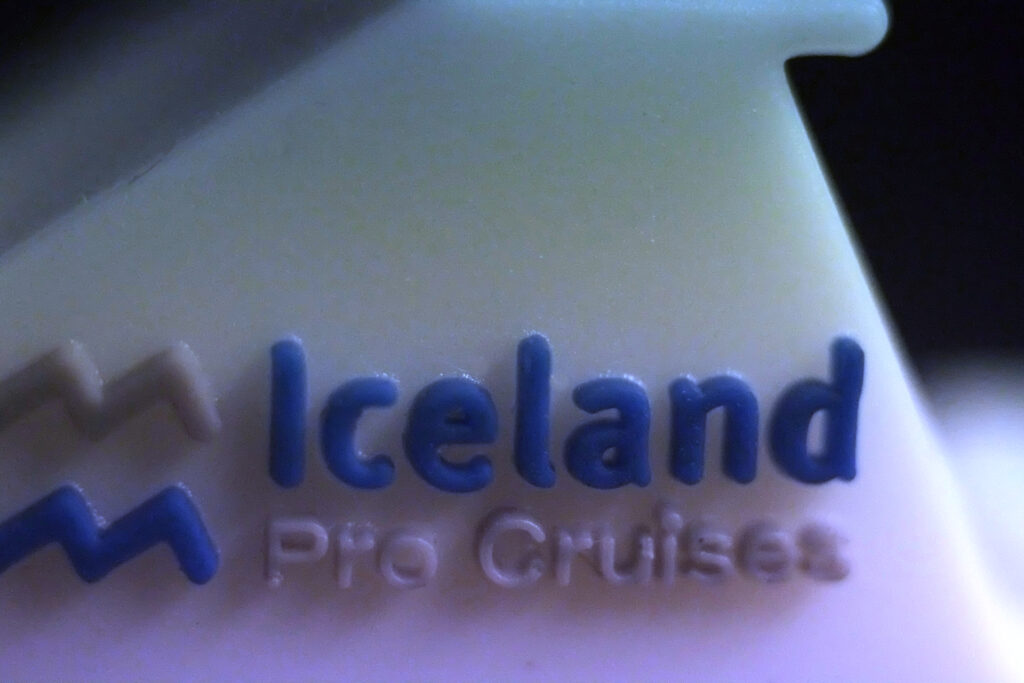 And finally, an outdoor pool deck, seemingly cloaked in cold Arctic fog:
And finally, an outdoor pool deck, seemingly cloaked in cold Arctic fog:
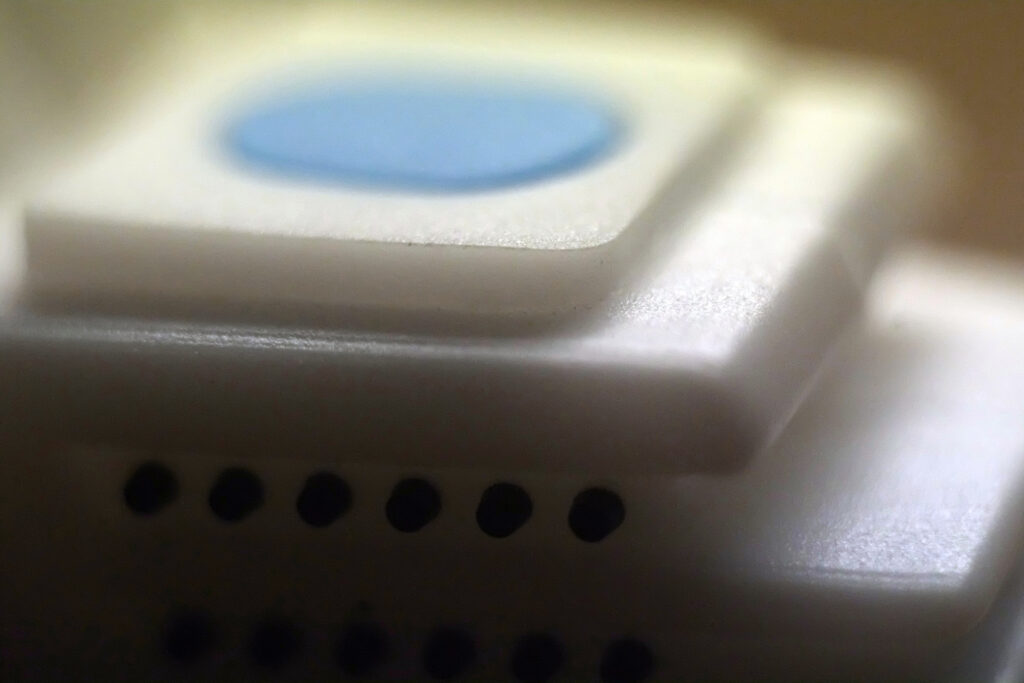
Marbleous Micro Worlds
I felt that the Bausch & Lomb lens didn’t really get to strut its stuff under that dim desk-lamp sun. So in experiment three, I shot hand-held macros of marbles lit by a light table below and a floor lamp above. NOTE: These were all shot at 1/15 sec, f/8 and ISO 400… with the camera stabilized on a bean-bag “monopod”:
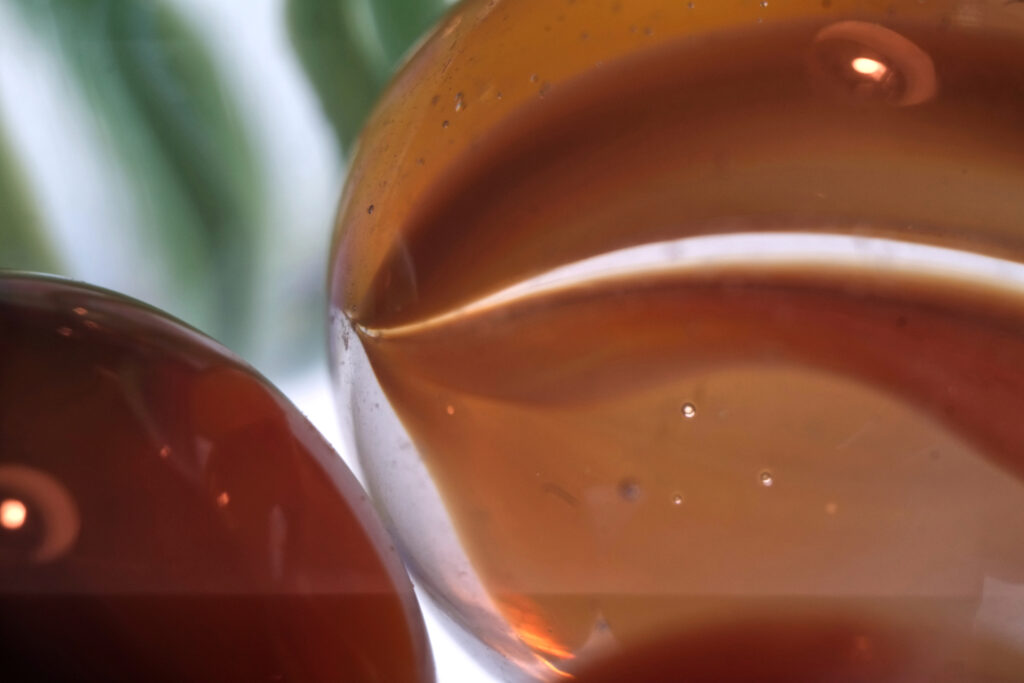
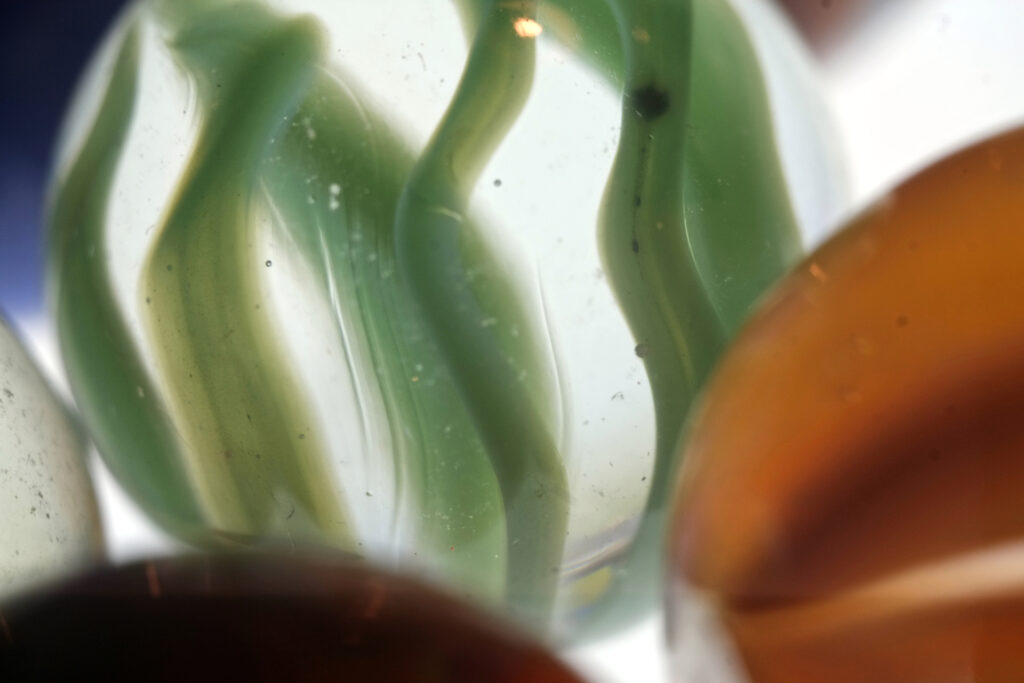
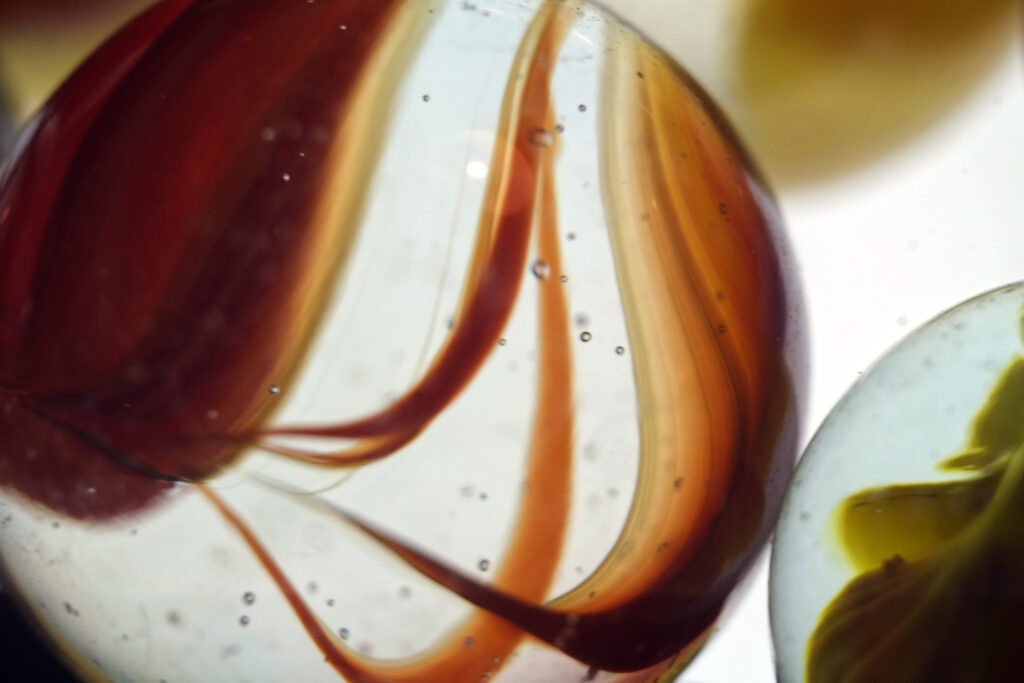
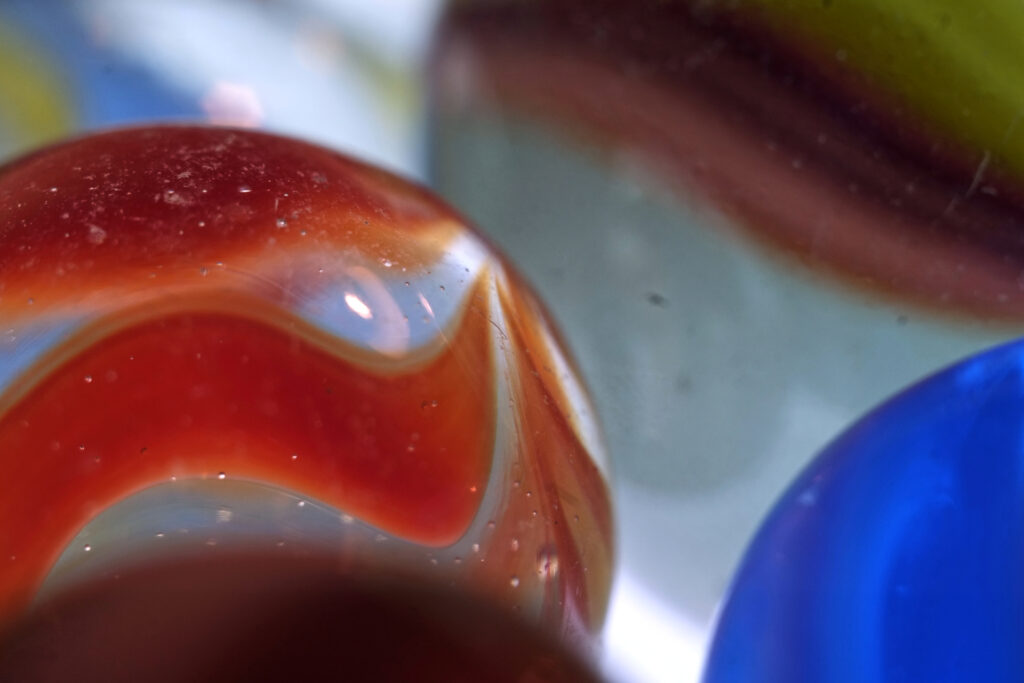
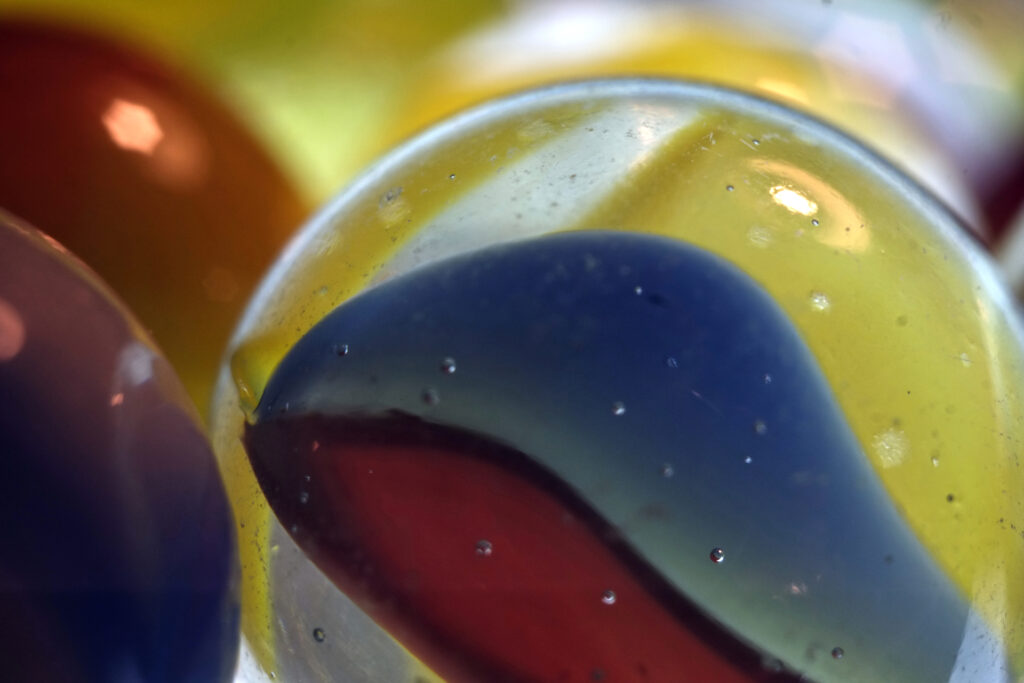
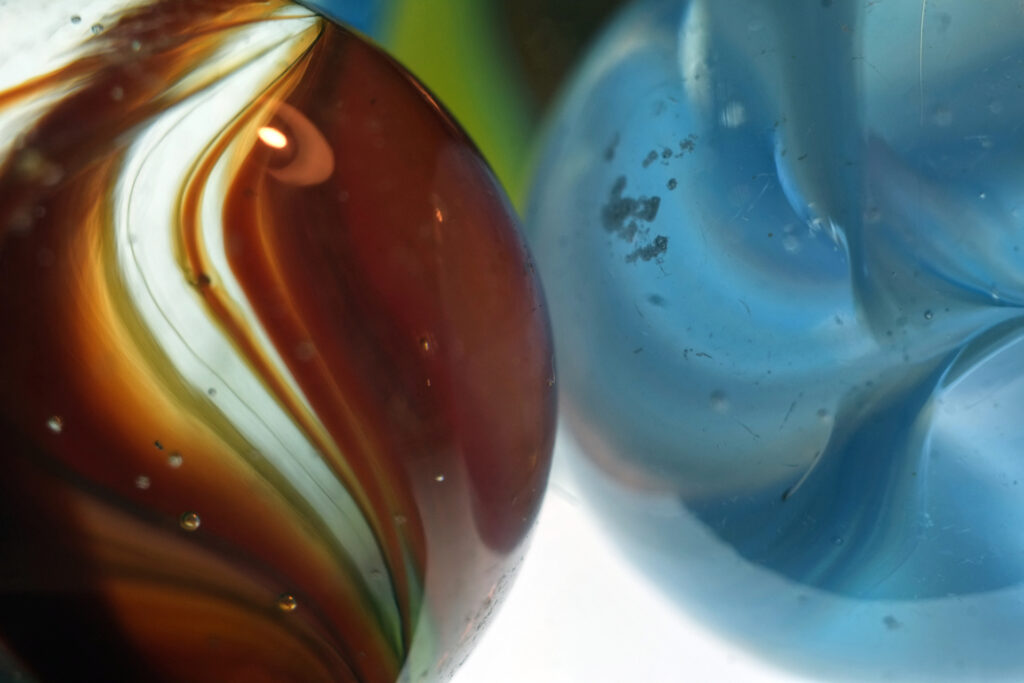
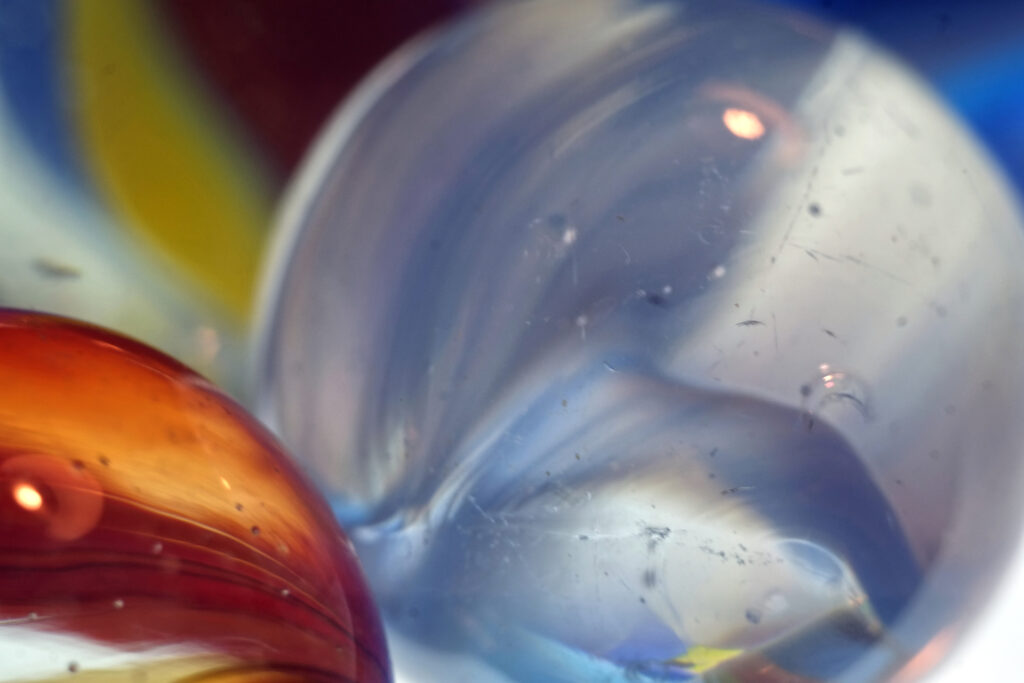
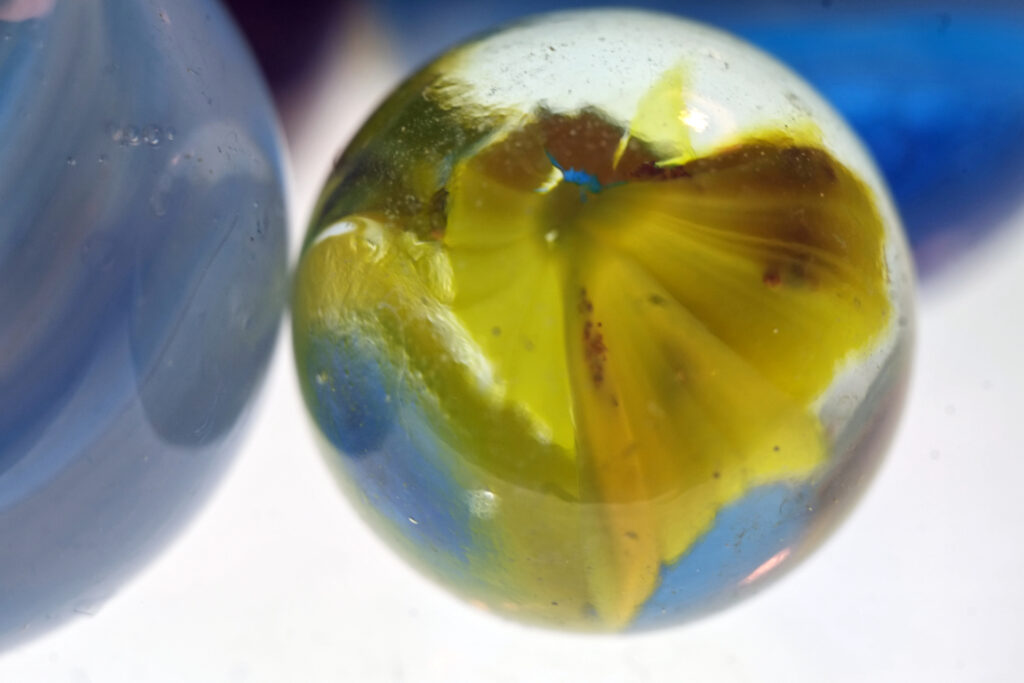
Like another world! The Bausch & Lomb Animar Balcote really strutted its stuff there.
And the last image especially intrigues me! It features the smallest of my marbles (at only 9mm wide, it’s dwarfed by the common “small” shooter to its left above). And its yellow inclusion looks shockingly like a trapped sea creature with butterfly wings and a sea-horse’s or dragonfly’s segmented tail! Quite odd. (I’ll see what more views reveal, and add a comment below if it proves interesting.)
But for now, I’ll stop here because my fourth experiment could be the most interesting and useful of all. As a teaser, let me just say that anyone who shoots “subminiature” 16mm or 110 film won’t want to miss the next part: “Adventures in C-Mount 110-film Scanning”!
–Dave Powell is a Westford, Mass. writer and avid amateur photographer.
Share this post:

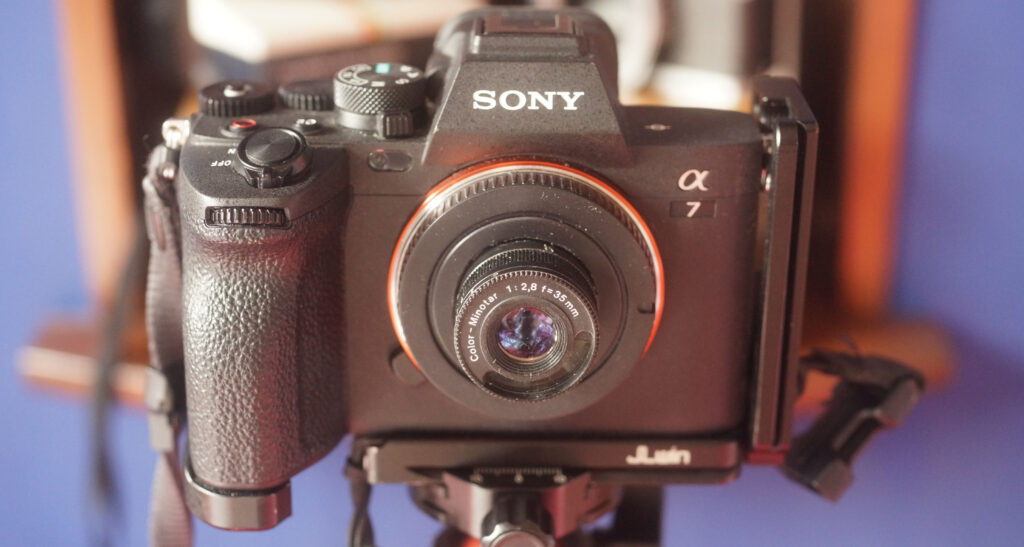

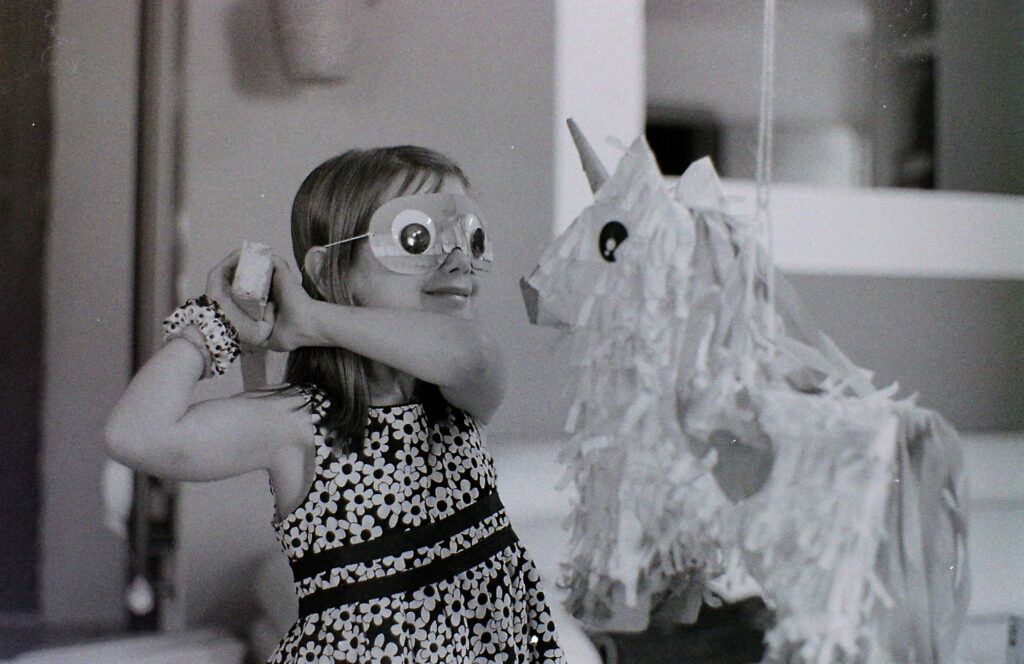
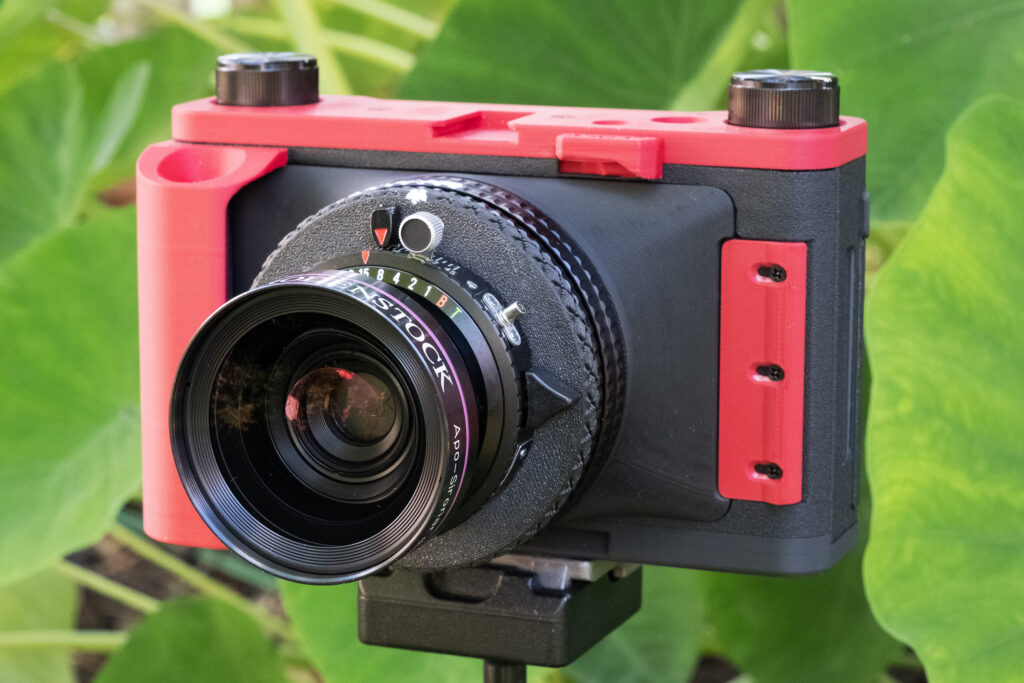




Comments
Bill Brown on Adventures in C-Mount Macro Land
Comment posted: 24/07/2024
Comment posted: 24/07/2024
Gary Smith on Adventures in C-Mount Macro Land
Comment posted: 24/07/2024
Comment posted: 24/07/2024
Gary on Adventures in C-Mount Macro Land
Comment posted: 24/07/2024
Comment posted: 24/07/2024
Comment posted: 24/07/2024
Comment posted: 24/07/2024
Comment posted: 24/07/2024
Comment posted: 24/07/2024
Marcus Gunaratnam on Adventures in C-Mount Macro Land
Comment posted: 24/07/2024
Comment posted: 24/07/2024
Jeffery Luhn on Adventures in C-Mount Macro Land
Comment posted: 26/07/2024
Loved the photos of the marbles!!!
I really enjoyed reading about your use of the C-mount lenses. In my first couple of years in the Laney (Oakland, Ca) photo program we shot lots of assignments with winder Bolex cameras with 3-lens turrets. Made in the pre-zoom era! When the focus was on, the images were razor sharp!!! It's so cool to see great lenses like that put back in action!!! As far as the marbles go... well that was an era, wasn't it? Endless hours kneeling on the dirt!!! Lastly: I renovated a four-unit apt building in San Francisco and while tearing out some plaster walls, I found a time capsule and many items left by what I think must have been the builders kids. Built in 1905, the year before the big quake. A very cool item: a bag of well scuffed marbles MADE OUT OF MARBLE! Handmade, by the look of them. Not perfect spheres. I think they were Italian, because the contractor and owner were Italian. I took them to the DeYoung museum and they were very excited to accept them. Playing marbles was a Roman past time. Jeffery
Comment posted: 26/07/2024
Paul Quellin on Adventures in C-Mount Macro Land
Comment posted: 26/07/2024
Comment posted: 26/07/2024